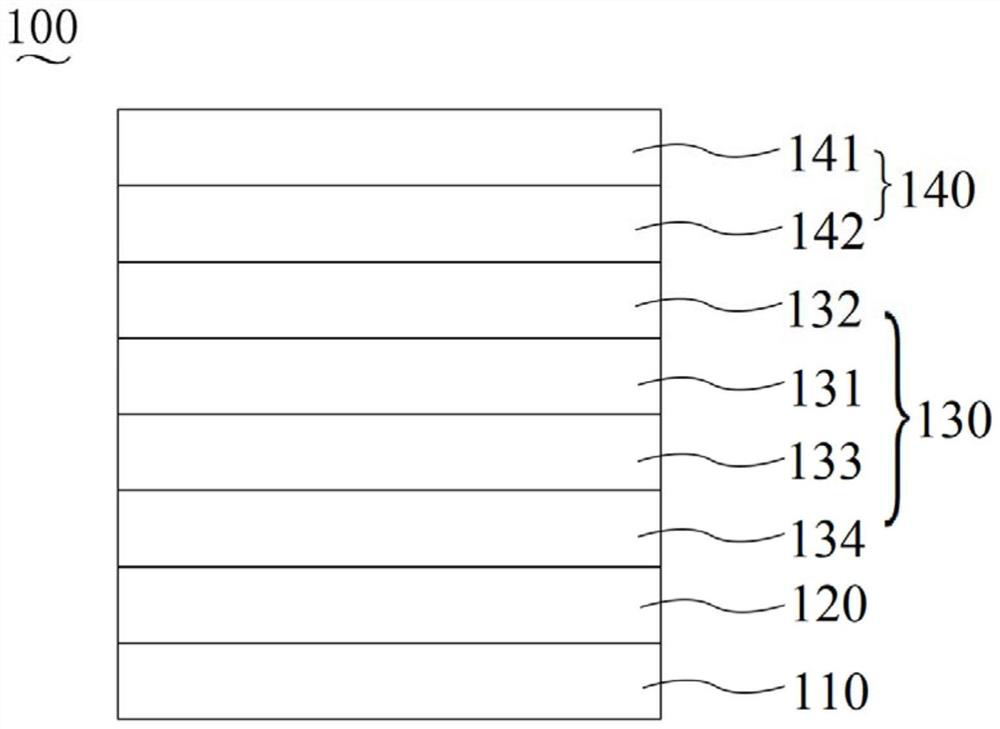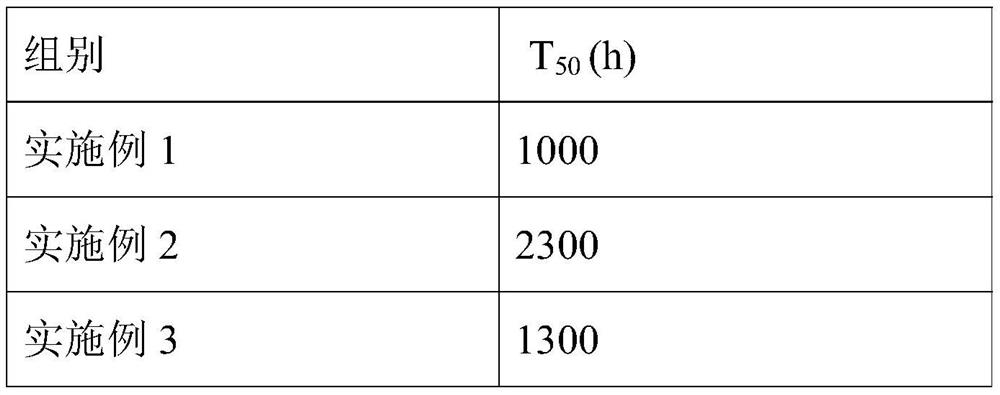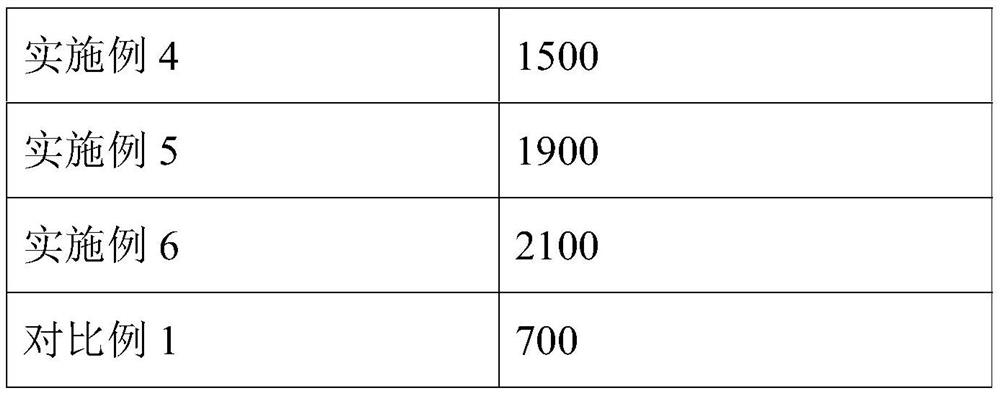Composite electrode structure and light emitting device
A light-emitting device and composite electrode technology, which is applied in the direction of electric solid-state devices, electrical components, semiconductor devices, etc., can solve the problems of affecting the luminous efficiency of light-emitting devices and aggravating the decline of devices, so as to solve the problems of accelerating device decline, promoting electron-hole balance, The effect of avoiding recession
- Summary
- Abstract
- Description
- Claims
- Application Information
AI Technical Summary
Problems solved by technology
Method used
Image
Examples
Embodiment 1
[0068] (1) Using transparent conductive film ITO as the anode, the thickness is 50nm;
[0069] (2) Depositing PEDOT by solution method on the anode:PSS is used as a hole injection layer with a thickness of 30nm;
[0070] (3) Utilizing solution method to deposit TFI on the hole injection layer as the hole transport layer, the thickness is 30nm;
[0071] (4) Depositing CdSe / ZnS as a quantum dot luminescent layer by a solution method on the hole transport layer, with a thickness of 25nm;
[0072] (5) Utilizing solution method to deposit ZnO on the quantum dot luminescent layer as the electron transport layer, the thickness is 40nm;
[0073] (6) Evaporating Cu on the electron transport layer is an electrode protection layer with a thickness of 5nm;
[0074] (7) Evaporating Al on the electrode protection layer as the Al metal electrode layer, with a thickness of 100nm;
[0075] (8) Place the above-mentioned QLED on a baking tray, and bake at 120° C. for 30 minutes.
Embodiment 2
[0077] (1) Using transparent conductive film ITO as the anode, the thickness is 50nm;
[0078] (2) Depositing PEDOT by solution method on the anode:PSS is used as a hole injection layer with a thickness of 30nm;
[0079] (3) Utilizing solution method to deposit TFI on the hole injection layer as the hole transport layer, the thickness is 30nm;
[0080] (4) Depositing CdSe / ZnS as a quantum dot luminescent layer by a solution method on the hole transport layer, with a thickness of 25nm;
[0081] (5) Utilizing solution method to deposit ZnO on the quantum dot luminescent layer as the electron transport layer, the thickness is 40nm;
[0082] (6) Evaporating Zn on the electron transport layer as an electrode protection layer, with a thickness of 5nm;
[0083] (7) Evaporating Al on the electrode protection layer as the Al metal electrode layer, with a thickness of 100nm;
[0084] (8) Place the above-mentioned QLED on a baking tray, and bake at 120° C. for 30 minutes.
Embodiment 3
[0086] (1) Using transparent conductive film ITO as the anode, the thickness is 50nm;
[0087] (2) Depositing PEDOT by solution method on the anode:PSS is used as a hole injection layer with a thickness of 30nm;
[0088] (3) Utilizing solution method to deposit TFI on the hole injection layer as the hole transport layer, the thickness is 30nm;
[0089] (4) Depositing CdSe / ZnS as a quantum dot luminescent layer by a solution method on the hole transport layer, with a thickness of 25nm;
[0090] (5) Utilizing solution method to deposit ZnO on the quantum dot luminescent layer as the electron transport layer, the thickness is 40nm;
[0091] (6) Evaporating Ag on the electron transport layer as an electrode protection layer, with a thickness of 5nm;
[0092] (7) Evaporating Al on the electrode protection layer as the Al metal electrode layer, with a thickness of 100nm;
[0093] (8) Place the above-mentioned QLED on a baking tray, and bake at 120° C. for 30 minutes.
PUM
| Property | Measurement | Unit |
|---|---|---|
| electron work function | aaaaa | aaaaa |
| thickness | aaaaa | aaaaa |
| thickness | aaaaa | aaaaa |
Abstract
Description
Claims
Application Information
 Login to View More
Login to View More - R&D
- Intellectual Property
- Life Sciences
- Materials
- Tech Scout
- Unparalleled Data Quality
- Higher Quality Content
- 60% Fewer Hallucinations
Browse by: Latest US Patents, China's latest patents, Technical Efficacy Thesaurus, Application Domain, Technology Topic, Popular Technical Reports.
© 2025 PatSnap. All rights reserved.Legal|Privacy policy|Modern Slavery Act Transparency Statement|Sitemap|About US| Contact US: help@patsnap.com



